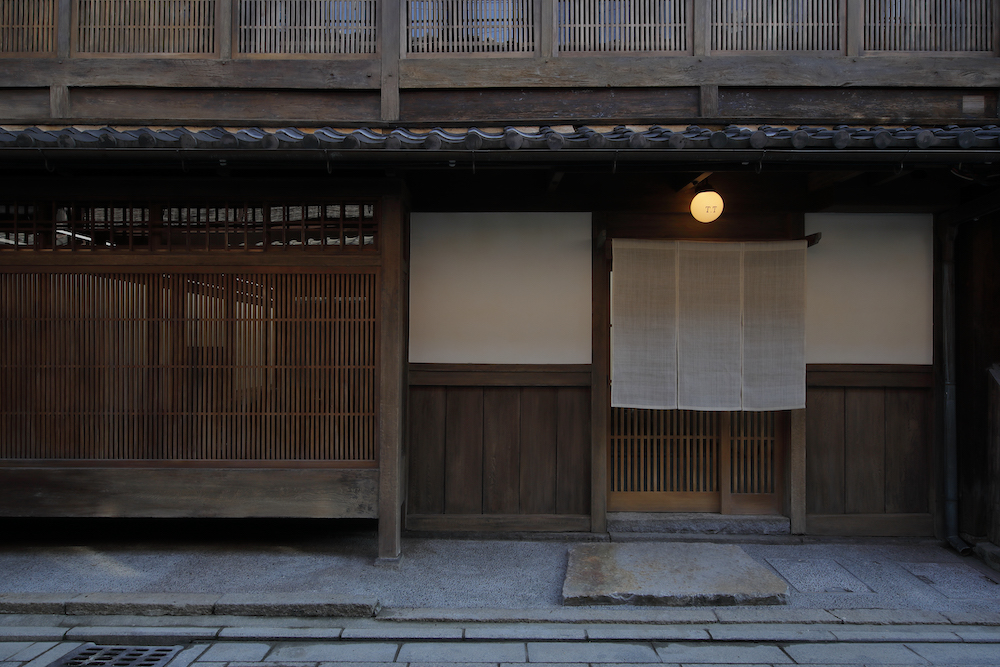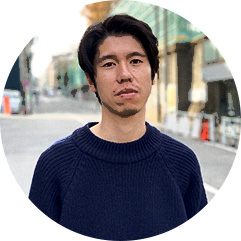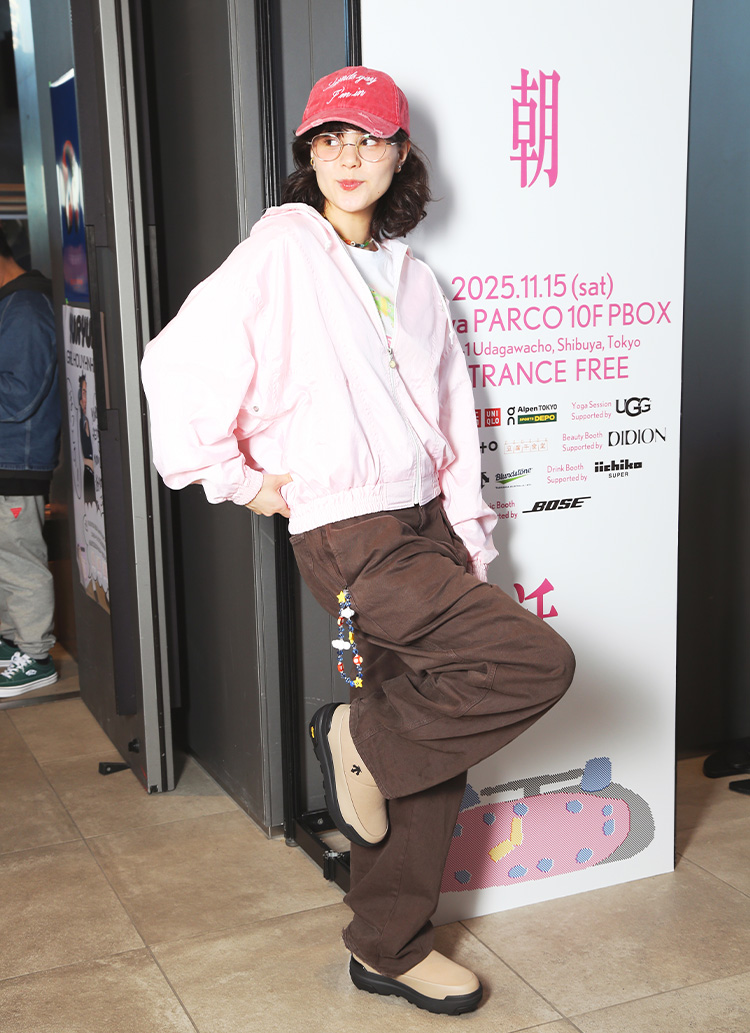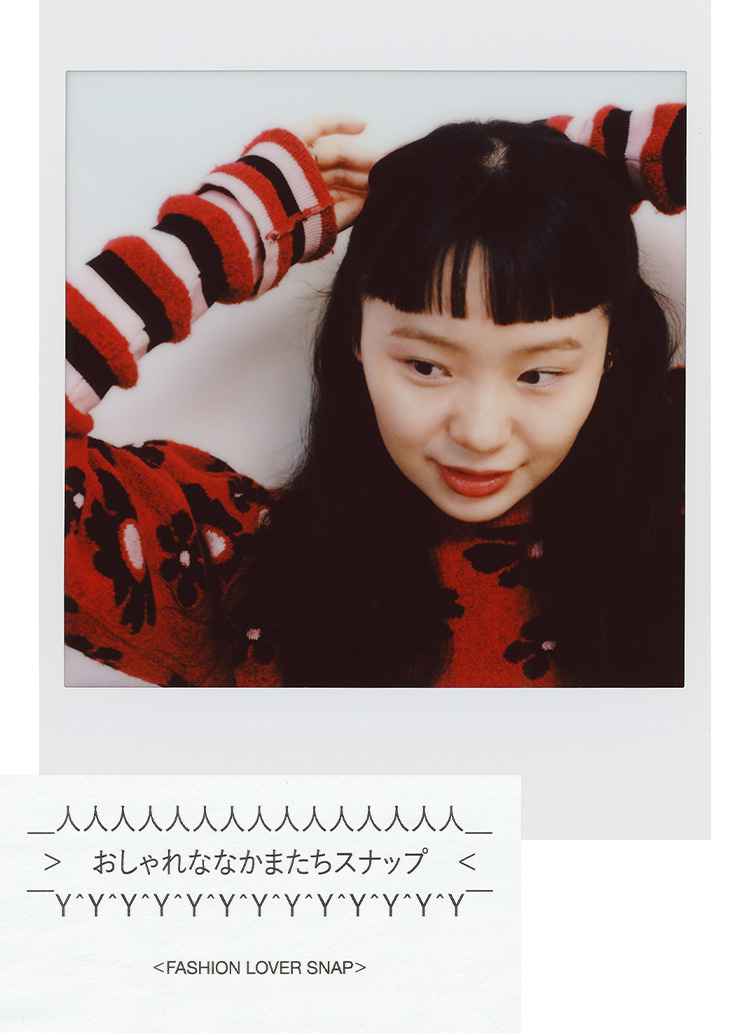Gion, Kyoto is dotted with historic shrines and temples, and is lined with long-established restaurants and teahouses. Hanamikoji, which runs through the area from north to south, is an elegant stone-paved street that retains the atmosphere of the good old days.
On December 4, "T.T.," a comprehensive art space including a boutique by Taiga Takahashi, opened just off the main street in Gion.
For those who don't know, the brand was launched in 2017 by designer and contemporary artist Taiga Takahashi. With the concept of "unearthing archeological objects of the future by reviving relics of the past," the brand landed in Japan in earnest this season.
A collector of antiques and old clothes, Mr. Takahashi researches old manufacturing in detail from an archaeological perspective and expresses his collections with a unique approach. Rather than simply copying vintage styles, Takahashi pays close attention to fabrics, sewing, patterns, and even accessories, creating modern clothes with a beautiful appearance.To learn more about Taiga Takahashi, please read this interview first.
Mr. Takahashi explains "T.T." as follows.
This building is a townhouse built in the early Taisho period (around 1904). (All of the lumber (used in the renovation) is old lumber, but we brought in scrap wood from shrines all over Japan.
The first floor is a boutique of "Taiga Takahashi" and a gallery where antiques, antiques, and sculptures created by Mr. Takahashi are exhibited. The second floor is a tea ceremony room called "Sabi," where the traditional Japanese culture of "Chanoyu" is expressed as a performing art. The result is a space that brings together a variety of art forms.
I returned to Japan from New York, where my studio is located, at the same time that I became the Corona Disaster. My hometown is in Kansai. When I walked around Gion, a neighborhood I had frequented since I was a child, I saw this one building available.
Having spent more than half of my life abroad, I wondered what my Japanese sensibilities and aesthetic sense were. Intuitively, I thought that if I did something here, I would be able to understand it.
Coincidentally, this building was originally used as a kimono shop on the first floor and a teahouse on the second floor.
The origins of Japanese art, architecture, and the art of tea ceremony can be found in the tea ceremony, and the tea room on the second floor, "Shikanbi," is a space where I reinterpreted this ancient Japanese sense of beauty as part of my overall artistic vision.
Here, there are clothes by "Taiga Takahashi," my sculptures, and a tea room. I call it a comprehensive art space rather than a store. Food, tea, ceramics, art, clothing... I think it will be interesting to have a place where people from different communities can come together and mingle.
Visitors to T.T. are greeted by a huge stone sculpture. Weighing 3 to 4 tons, it is carved out of basalt rock and "expresses the invisible flow of time," according to the artist.
©︎ Taiga Takahashi 'Infinity Gate', 2021, basalt, 86.5x126x85.5cm
When I held an exhibition in Tokyo last spring, I decorated half of the space with a work by Isamu Noguchi titled "AKARI. From there, I got involved with the Isamu Noguchi Nippon Foundation, and I actually created this work with their cooperation. There are stonemasons all over Japan, but it is impossible to create something figurative without Western sculpting techniques.
The late Masatoshi Izumi, who served as president of the "Isamu Noguchi Nippon Foundation," supported the production. He was a stone sculptor who supported Isamu Noguchi for more than 20 years. In addition to the three works created by Mr. Takahashi, a work by Mr. Izumi was installed in the center of the building.
©︎ Taiga Takahashi 'Infinity Circle', 2021, basalt, 78x104x76.5cm
©︎ Taiga Takahashi 'Infinity Tower', 2021, basalt, left: 21.3x21.3x200cm / center: 17.4x17.4x200cm / right: 21.3x21.3x200cm
Masatoshi Izumi's work installed in the center of the building
Mr. Izumi passed away (in September this year), and I was able to take over this building at that time. Normally, frames are attached to the windows, but I dared not to attach frames to the windows overlooking this work, so I designed it without the concept of outside and inside.
Mr. Noguchi is an American, but he is an artist who captured and transformed Japanese culture with Western art. Mr. Izumi has supported him for decades and watched him from the side. I learned a lot from being able to work on a creative project with someone who knows such history.
I really wanted people to see the finished space as well. The expression of the work I saw in Mr. Izumi's atelier in Mure (Kagawa) is completely different from the expression of the work placed here."
This statement gives us an idea of the importance of Mr. Izumi's presence, who was also involved in the creation of the "T.T." space. On the same floor as the sculptures are clothes by Taiga Takahashi, which are based on items made more than 100 years ago.
For example, the engineer's coat (photo below) is one that is "dyed using a technique that has been used for over 1,300 years. It is said to be naturally dyed with a plant called teichigi from Amami-Oshima, and then dipped in mud containing high iron content, which reacts to black to produce this deep color. This is a delicate technique usually used for Oshima silk, and the finished look changes depending on the physical condition of the craftsman and the weather. This is where Mr. Takahashi's desire to "make clothes that cannot be mass-produced" is expressed.
ENGINEER COAT (LOT 401) ¥114,400
The unique texture made of organic cotton reproduces the fabric used by the U.S. Army during World War I in the 1910s.
I don't intend to do anything like a select store here, nor do I intend to carry other brands or sell vintage clothing. The only thing I might do is put some antiques that I have collected myself. I only want to put things that have been filtered through my own eyes.
I am not interested in designing clothes from scratch, but rather I have been studying the thousands of garments I have collected from 70 to over 100 years ago from an archaeological point of view and presenting my collections. Through this process, I came to the conclusion that clothing is a device for tracing memories.
People's dress is heavily influenced by social conditions, but we believe that clothing can be like a time capsule, surviving and withstanding time so that we can relive memories of the past and lock away lost cultures and traditions."
Ascending to the second floor via an Aji stone staircase supported by only one wall, you will find the tea ceremony room "Shikarumi". This is a space where the world of "chanoyu" can be seen as a performing art.
The restaurant proposes confections that combine tradition and innovation created by the second-generation craftsman of a long-established Japanese confectionery shop, and Japanese tea and cocktails using carefully selected tea leaves, each consisting of five items, and chagai kaiseki. Mr. Takahashi's unique attention to detail was also evident in this space.
The walls are covered with panels of paper hand-dyed one by one by craftsmen from Kami Soe, a karakami studio in Kyoto. The chairs are made in collaboration with Sakura Seisakusho, which produces furniture for George Nakashima.
We also went to various artists around the country to select the plates on which to place the sweets. We plan to change the dishes according to the menu, which changes every month.
The December menu is "Shihan no Saryo Kaiseki". It is not just Japanese sweets and tea, but creative kaiseki full of originality, combining Japanese elements with Western ideas. One and a half to two hours of tantalizing your taste buds with exquisite sweets of moderate size. The paired Japanese tea will soothe your tired mind. The following is a part of "Shihan no Saryo Kaiseki".

"Mountain Sleep."
Authenticated kinton, white azuki bean jelly bean paste from Bicchu, dried persimmon
"Dead Tree Star."
Raw chocolate yokan, pecan nuts
In these tough times when unique fashion and affordable apparel survive, and brands with ambiguous positions are being weeded out, the Internet may be sufficient if all you want to do is sell clothes. It is against this backdrop that Mr. Takahashi completed his own castle, a comprehensive art space.
When I talk to craftspeople and artisans who have been doing this for generations, I find that while they adhere to the fundamentals of their craft, they change their approach according to the times. It is as if they read the trends of the times. In this age of information overload, I think it is necessary to reexamine old things and values and revive them using modern methods.
PROFILE
Born in 1995. She grew up in Kobe, Japan and moved to the UK in 2010. After graduating from the London School of International Art, he entered the BA Womenswear Department at Central Saint Martins in 2001. He will be arriving in Japan for the fall/winter 2021 season.
Photo_Kazuma Yamano
T.T. (1st floor)
Open: 12:00-19:00 (closed on Wednesdays)
Phone: 075-525-0402
Official Site
*On December 4, the online store opens.
Gion Saryo Shikumi (2nd floor)
Open: 13:00-18:30 (closed on Wednesdays, reservations required, chaka-kaiseki ¥5,500)
Phone: 075-525-4020
Official Site
Address: T.T. 570-120, South side of Gion-cho, Higashiyama-ku, Kyoto-shi, Kyoto




![【FOCUS IT.] Digital camo in a silver world. Playback of the Abasing Ape® event held at Sapporo Kokusai Ski Resort!](https://www.houyhnhnm.jp/wp-content/uploads/2025/12/2512111_bape_C-700x394.jpg)
![【FOCUS IT.]Anselm looks back on his first runway. The Spring/Summer 2026 collection was a turning point.](https://www.houyhnhnm.jp/wp-content/uploads/2025/10/panel_Anselm_2400_1350-700x394.jpg)
![【FOCUS IT.] Harry Sugiyama talks about running as a culture.](https://www.houyhnhnm.jp/wp-content/uploads/2025/10/fix_80A6625-700x467.jpg)
![【FOCUS IT.]PS Paul Smith's Japan-exclusive capsule collection, presented with a twist to the younger generation.](https://www.houyhnhnm.jp/wp-content/uploads/2025/07/0718_HYM_-21_hon-700x394.jpg)
![【FOCUS IT.] Jjimjilbang, authentic Korean food, amusement park and even a casino! Three days spent in Paradise City, a rumored paradise in Korea.](https://www.houyhnhnm.jp/wp-content/uploads/2025/07/TOP-1-700x394.jpg)
![【FOCUS IT.] We went to the press preview of Daiwa Pier 39. We propose coolness to connect to the future.](https://www.houyhnhnm.jp/wp-content/uploads/2025/06/panel-700x467.jpg)





